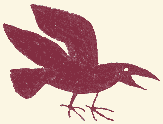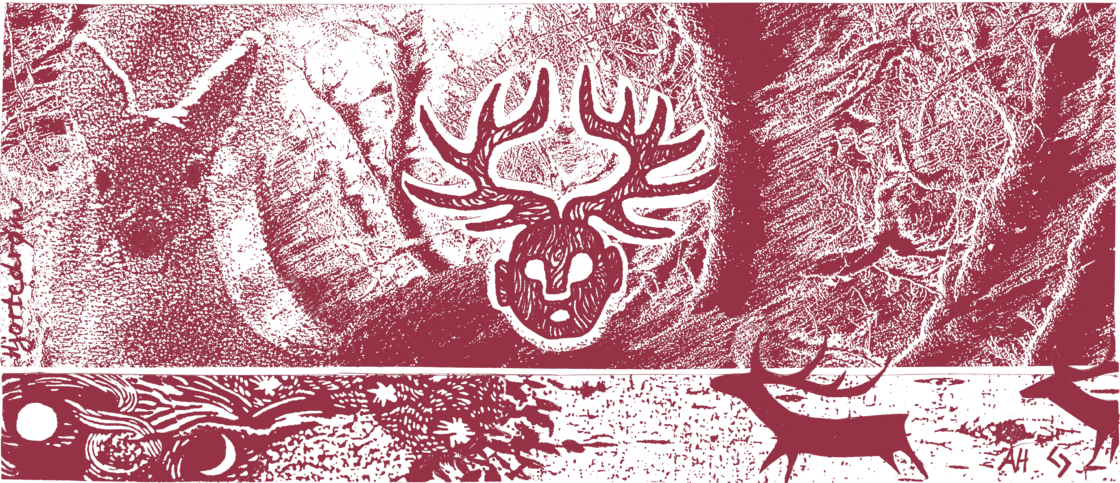ABOUT SHAMANISM
 ABOUT SHAMANISM
ABOUT SHAMANISM
PERSPECTIVES -- HISTORY -- TRADITIONS

Shamanism is humanity’s oldest spiritual practice and is found all over the world. To this day, it offers many essential skills that help to navigate modern life and give powerful tools to work with environmental challenges.
For us, shamanism is a way to bring healing, to maintain power and balance, and to strengthen kinship between humans and the rest of creation. Our work centers on developing strong, ongoing and reciprocal relationships with the Spirits. We ask for their guidance and let them lead the way. We are focused on how shamanism can teach us to live well on the Earth rather than “being a shaman”.
We work with shamanism as a spiritual practice rooted in everyday living. In changing and challenging times, working with the Spirits provides a compass for the soul, reminding us of who we are and helping us to keep our intention strong. The shaman’s craft is based on the knowledge that all that exists is alive and contains spirit power. The shaman works by contacting this living power, asking for help and asking for teachings. To do this, the apprentice must first learn to make a consciousness shift. Learning to make this shift is easy for most people when practicing with clear intention and the rhythmic beat of the drum, chanting, dancing.
![]() THE WORD SHAMAN
THE WORD SHAMAN
There are many different views about what a shaman is and many shamanic traditions throughout the world which vary from one another. The word “shaman” comes from the Tungus speaking people in Siberia, and is often understood to mean “the one who knows”. It came into English usage mainly as an anthropological and academic term. Animism – as a definition rather than a practice - also comes from academia, and both terms are not without problems. These days the word “shaman” and “shamanism” are used widely throughout the world, to mean many different things, often without clear definition. It is good to look deeper into what is actually being referred to. An important part of modern explorations of shamanism is to become aware of the complexities of cultural appropriation, learn how to respect indigenous traditions, and reconnect with our own cultural heritage.
Many traditional practitioners who are regularly referred to as shamans would not call themselves by this name. Different cultures have their own traditions and terms – medicine man or woman, angakkuq, curandera, noaidi, sangoma, wise woman or man and many more. Local Nordic names are troldkyndig, seiðrmadr, völva, tietäjä. Though there are similarities, the traditions are in no way interchangeable. Each has its own traits, rooting in relationships and agreements with local places and Spirits. For us a shaman is not defined in terms of who one is but rather how one works: a human who changes their state of consciousness, at will, in order to contact and/or travel to the world of the Spirits to obtain power and wisdom. Part of the shaman’s work is to bring this power and knowledge home, back to the physical world, to help oneself or others.
We never refer to ourselves as shamans but prefer to think of ourselves as “an apprentice to the Spirits”. Our way of working shares some traits with “core shamanism” as developed by Michael Harner and the Foundation of Shamanic Studies. However, we also differ in many aspects.

![]() THE SPIRITS
THE SPIRITS
We meet and understand Spirits within an animist worldview. We do not relate to them within a special order or hierarchy, where some are seen as more refined or better than others. We work with many different kinds of Spirits and Nature beings, whether they reside in the middle, lower or upper worlds. If they offer their help, we see them as ones that we need and want to cooperate with, for the good of all. When we ask for help with a clear intention, we welcome and honour those who respond. If we are not sure about who comes, we turn to our trusted Spirit Allies, who we have developed long-term relationships with, and ask for advice. We do not label Spirits as good and bad, or consider some “compassionate”, “sentient” or “moral” and others not. We do not feel that it is up to humans to determine this. In an animistic worldview all beings are “sentient” and we can learn to engage with them, if we ask for help to understand their terms, perspectives and contributions.
![]() THE WORLD MAP
THE WORLD MAP
We engage with a general map of the Spirit Cosmos where there are three basic Worlds. Many shamanic traditions throughout the world mention three such aspects of the Spirit World, though relate to them in widely varying ways. There are also other areas beyond these three, that are not always in strict relationship with each other. The World Tree is found in many traditions and can sometimes serve the purpose of as a center of the World Map, with the roots in the lower world, the trunk in the middle world and the crown in the upper world. In shamanic journeys it can be a place from which we access the different Spirit Worlds from. When working in Nature, whatever tree you sit under can be related to as a World Tree - every tree has this in its core if we choose to meet it in this way.
For some people, the Spirit World is not separated into clear definitions as the Spirits teach them otherwise. Many of our students experience, as do we, that they are not hierarchical or morally differentiated, with Upper World as “good” or Lower World as “bad” (as in heaven and hell). Instead they have been shown to us as different aspects of Life, offering distinct types of power and help. We work a lot in the Middle World, both for practical everyday advice and to come closer to the Spirits of Nature. In the end, the three worlds are not fixed categories, but we often move freely between them, according to and determined by our mission. This cosmic map is essentially a human construct, created to help comprehend invisible realms. The Spirits often defy our definitions and live as they wish according to their own ways.
Much of our work takes place in Nature, with Medicine Walks, Ceremonies and Utiseta/Vision Quests in deep counsel with the Spirits and beings that are often seen as residing in the Middle World. We have found it to be an essential part of our practice, helping people who feel fearful or disconnected to feel at home on Earth again and re-discover the more-than-human family.

![]() THE ELEMENTS
THE ELEMENTS
We relate to the Four Elements as essential building blocks of Life and ancient mighty beings. Air, Fire, Earth, Water all have their own Spirit and Spirits, and can both create Life and destroy it. It is up to us Humans to learn again how to live in relationship with them, respecting and honouring their Power and role upholding the balance of nature. The animistic worldview is eco-centric, rather than ego-centric, and does not put humans at the center. Many Spirits, like the Elements, have their function in the greater cycle of Life and are not always focused on human beings. Depending on the situation and on how we ask to work with them, the Elements can be generous, challenging, wise, forceful, wonderful teachers. The great invitation at this time is to move away from an anthropocentric sense of the Universe to an animistic one. More-than-human Nature has its own intelligence and language, and the more we learn to communicate and connect with it, the better it will be for us all.
![]() THE PACT
THE PACT
All through history, humans have made pacts and agreements with the Spirits and the Forces of Nature. Through this we come to live in harmony with the World, learn good relations and ways to cooperate and collaborate. It is very common to give gifts and offerings to honor those we rely on, those who feed and shelter us, who our survival depends on. Such pacts and offerings are sacred agreements, made in mutual respect. They are not “bribery” or payment to the Spirits, they are a deep recognition of our gratitude and accord. In its origins, sacrifice literally means "to make sacred" - it is not something we “give away” and lose. Rather it is something we “give to”, freely and wholeheartedly, in thanks for the gift of Life.
To learn more about our shamanic perspectives and ways of working, please visit the Library that holds a great variety of articles, podcasts, videos and talks. You can also visit our YouTube channels where Jonathan and Zara explore different aspects of everyday shamanism, and Annette explains Nordic practices.
![]()

